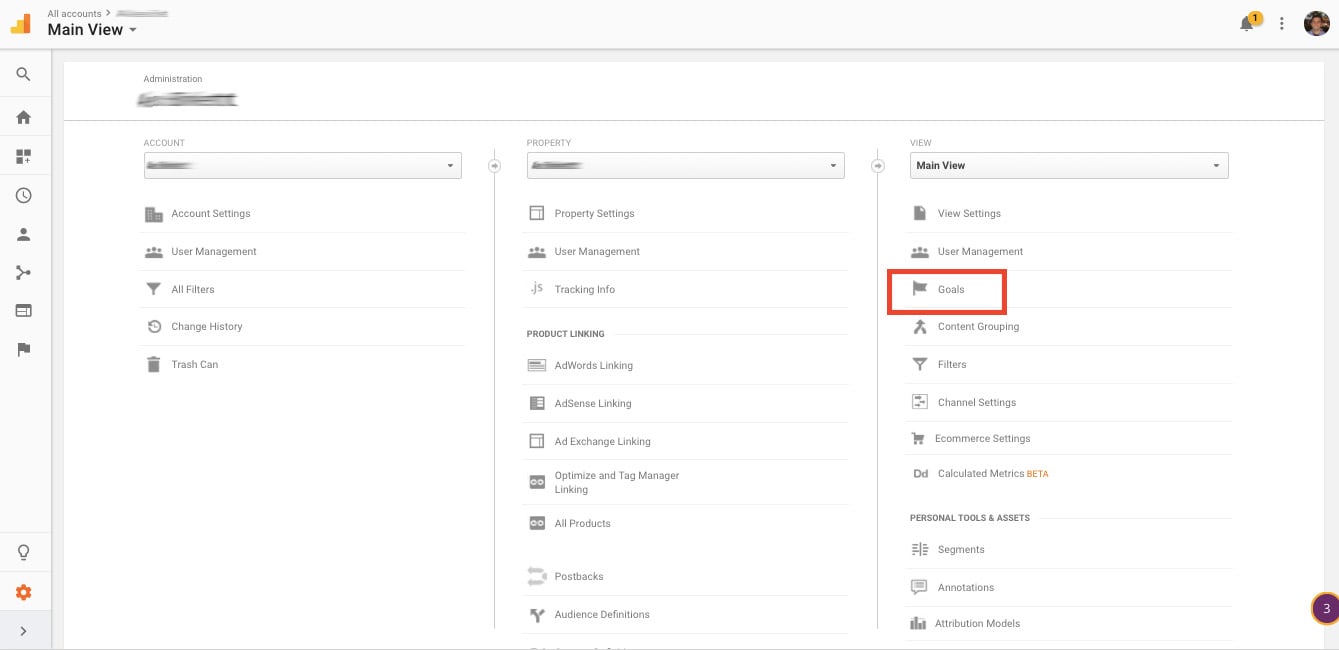Discover the Limitations of Google Analytics Goals: Revealing the Information Kind That Remain Untrackable
As services increasingly rely on data-driven decision-making, comprehending the constraints of devices like Google Analytics ends up being vital. While Google Analytics Goals deal important understandings into customer interactions, there exist information kinds that elude tracking, posing challenges to an extensive understanding of user behavior.
Insufficient User Trip Tracking
Insufficient customer journey monitoring within Google Analytics can hinder the capability to properly analyze user habits. When the user trip is not totally tracked, there are spaces in the data that protect against a thorough understanding of just how individuals engage with a website. This absence of understanding can lead to missed out on possibilities for optimization and enhancements to the customer experience.
One typical concern with incomplete user journey monitoring is the failure to see the complete course that customers take in the past completing a goal or leaving the site. Without this info, it is testing to determine where individuals may be running into barriers or rubbing points that prevent them from converting. Furthermore, incomplete tracking can obscure the effect of particular advertising initiatives or website modifications on customer behavior.
To resolve this restriction, it is essential to set up appropriate monitoring systems within Google Analytics to record the whole user journey. This may include establishing occasion monitoring, objective funnels, or utilizing tools like Google Tag Manager to guarantee that no important interactions go unrecorded. By acquiring an extensive view of the individual journey, site owners can make more informed decisions to boost customer engagement and drive conversions.
Attribution Challenges
Browsing with attribution challenges in Google Analytics requires a thorough understanding of just how different touchpoints add to the total conversion process. Acknowledgment challenges occur from the complexity of modern customer trips, where users engage with several networks before transforming.
One common acknowledgment obstacle is the trouble in associating conversions to the correct resource, particularly in situations where individuals connect with several channels before transforming. This can bring about errors in determining which advertising and marketing efforts are driving one of the most conversions. Furthermore, cross-device monitoring presents one more attribution obstacle, as users typically switch in between devices during their trip, making it challenging to track their interactions perfectly. Marketers have to carefully interpret and evaluate acknowledgment information to make educated choices and enhance their marketing approaches efficiently.
Offline Conversions
Given the challenges related to associating conversions properly in online channels, the dimension of offline conversions provides a significant chance for marketers seeking a much more extensive understanding of their clients' journey. Offline conversions refer to actions that clients take in the real world, such as making purchases in brick-and-mortar stores or over the phone, participating in events, or involving with straight from the source printed products - what data is google analytics goals unable to track. These conversions are essential for businesses that run both online and offline, as they offer useful insights into the effectiveness of advertising campaigns across numerous touchpoints
Tracking offline conversions typically presented a considerable challenge for marketers, as it was challenging to attach these activities back to certain on-line communications accurately. Nevertheless, with innovations in innovation, such as the assimilation of CRM systems, unique identifiers, you could check here and voucher codes, services can now connect the void between online and offline information to get an extra all natural view of consumer habits. By successfully determining offline conversions, marketing professionals can enhance their techniques, designate sources more successfully, and eventually improve the total consumer experience.
Cross-Device Monitoring
Cross-device tracking plays an essential function in understanding the interconnected nature of customers' digital communications throughout multiple tools. In today's omnichannel globe, where customers effortlessly switch over in between desktops, mobile phones, and tablets, tracking their actions throughout these gadgets is important for marketing professionals to acquire a comprehensive view of their client journey.

Additionally, personal privacy issues and regulations such as GDPR and CCPA have even more complicated cross-device monitoring. With customers requiring more control over their information and enhanced constraints on tracking innovations, online marketers need to discover privacy-compliant and innovative methods to link customer interactions throughout gadgets.
Dynamic Material Interaction
Understanding user engagement with dynamic web content is crucial in maximizing electronic marketing strategies for improved audience communication. Dynamic material refers to site components that transform based on customer actions, preferences, or other variables, supplying an individualized experience. Nonetheless, tracking individual interactions with vibrant material poses obstacles for standard analytics devices like Google Analytics.
While Google Analytics can track standard interactions like clicks and web page sights, it may battle to catch even more nuanced interactions within vibrant web content. what data is google analytics goals unable to track. Metrics such as time invested on certain vibrant aspects, hover activities, or interactions within pop-ups are usually not easily measurable making use of basic monitoring approaches. This constraint impedes marketers' capability to fully realize how users are involving with vibrant content and customize their strategies accordingly

Final Thought
Finally, Google Analytics goals have limitations in tracking incomplete customer journeys, associating conversions precisely, capturing offline conversions, tracking cross-device communications, and measuring visit dynamic web content engagement. These constraints highlight the relevance of checking out added tracking techniques and devices to gain a much more comprehensive understanding of customer behavior and conversions past what Google Analytics can provide.
While Google Analytics Goals offer beneficial insights right into individual communications, there exist data kinds that thwart tracking, presenting challenges to an extensive understanding of individual habits.Incomplete individual journey monitoring within Google Analytics can prevent the capacity to precisely examine customer habits. When the customer journey is not fully tracked, there are voids in the information that protect against a thorough understanding of exactly how individuals communicate with a web site.One common problem with incomplete customer trip monitoring is the inability to see the full path that users take previously finishing an objective or leaving the website. By gaining an extensive view of the user trip, website proprietors can make more informed choices to enhance individual involvement and drive conversions.
 Amanda Bynes Then & Now!
Amanda Bynes Then & Now! Jenna Jameson Then & Now!
Jenna Jameson Then & Now! Michael C. Maronna Then & Now!
Michael C. Maronna Then & Now! Lisa Whelchel Then & Now!
Lisa Whelchel Then & Now! Brooke Shields Then & Now!
Brooke Shields Then & Now!